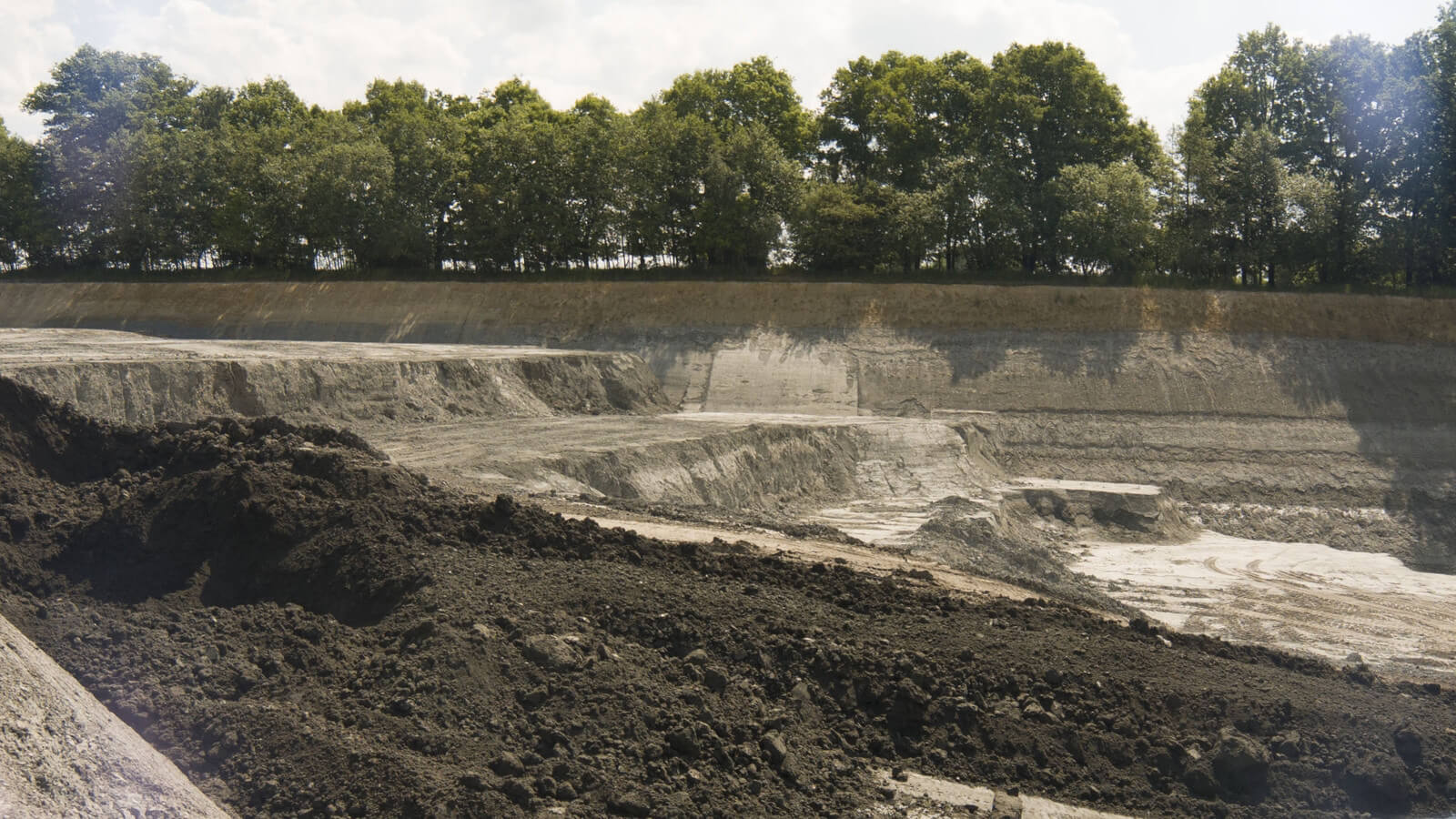Geology / Hydrogeology

Superficially, the Eichenallee clay deposit consists of Pleistocene sediments. These are primarily glacial loam with individual pieces of rock rubble and bed loads as weathered remnants of ice-age glacial ground moraine. The Quaternary deposits within the area under application reach an average thickness of approx. 2.5 m. The cover layer is followed below by the Tertiary deposits of the Lintfort and Ratingen layers which form the clay deposit for extraction. With its excavation depth of about 15 metres over an area of 33.5 hectares, the “Eichenallee“ clay pit has a huge potential of the high-grade material clay which can be used for the most varied applications.

Hydrogeology
The earth formation in the projected area has two groundwater storeys, separated from each other by the clay deposit.
The upper groundwater storey is made up of the Quaternary deposits. Because of the very poor water permeability of the boulder clay, the water regime is dependent on precipitation and is low.
Because of their high density, the Tertiary layers lower down – the clayey to silt-clayey Lintfort layers and also the Ratingen clay – are considered to be aquicludes. In the area of the planning project they have a thickness of at least some 50 metres. On account of these geological conditions, the “Eichenallee“ clay extraction has a “natural seal“ which provides a particularly favourable starting condition when the pit is subsequently refilled.
The Walsum layers are located in the floor of the deposit. In the area around the Gartroper Busch they form, together with the Cretaceous Recklinghausen layers below, the second groundwater storey with a confined water table. In the area of the project, the groundwater is not utilised as a source of potable water so that this region is not designated as an area under drinking water protection. In the area under projected planning there are no so-called Haltern sands which conceal considerable groundwater resources, used as numerous groundwater abstractions. They only begin further north.


